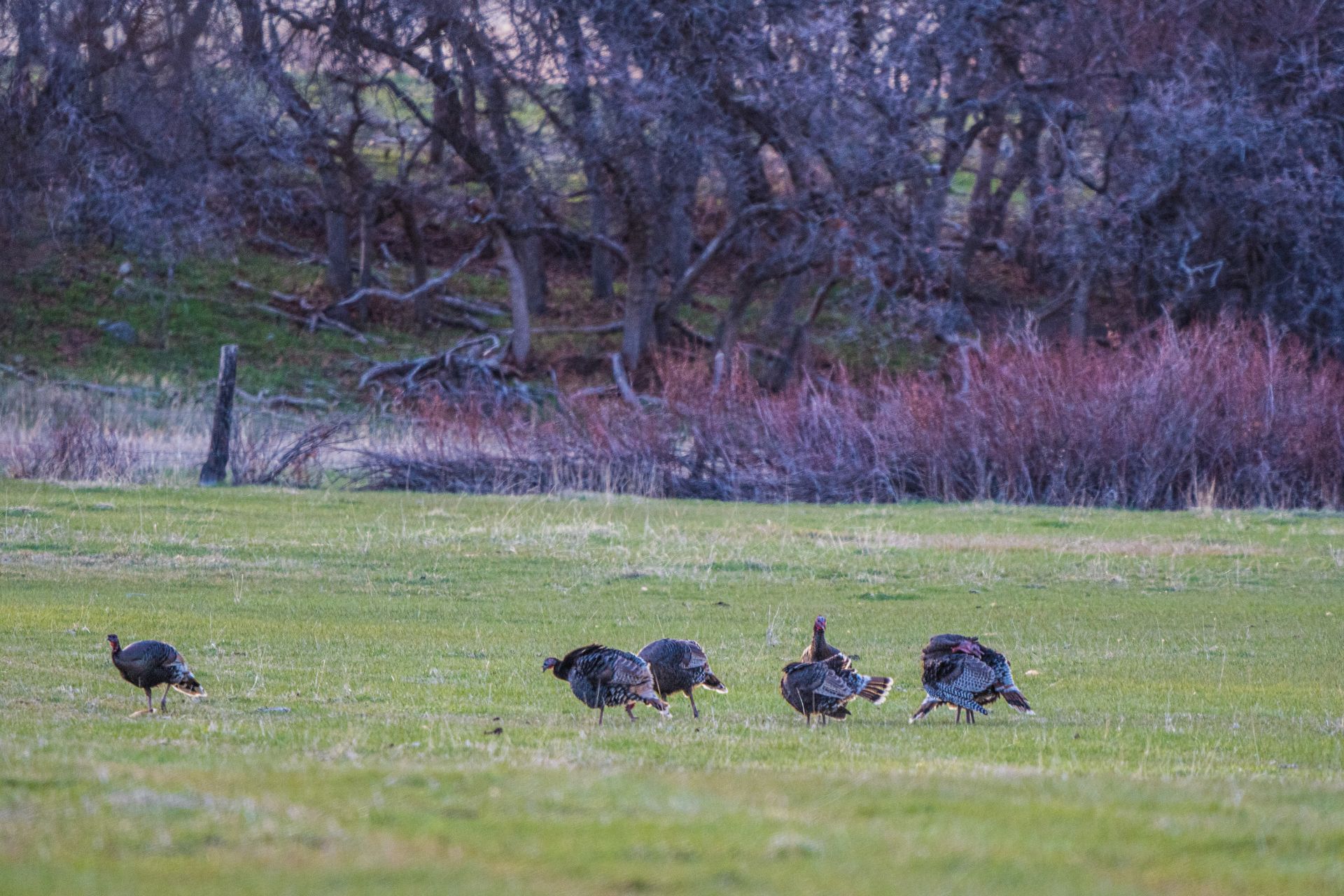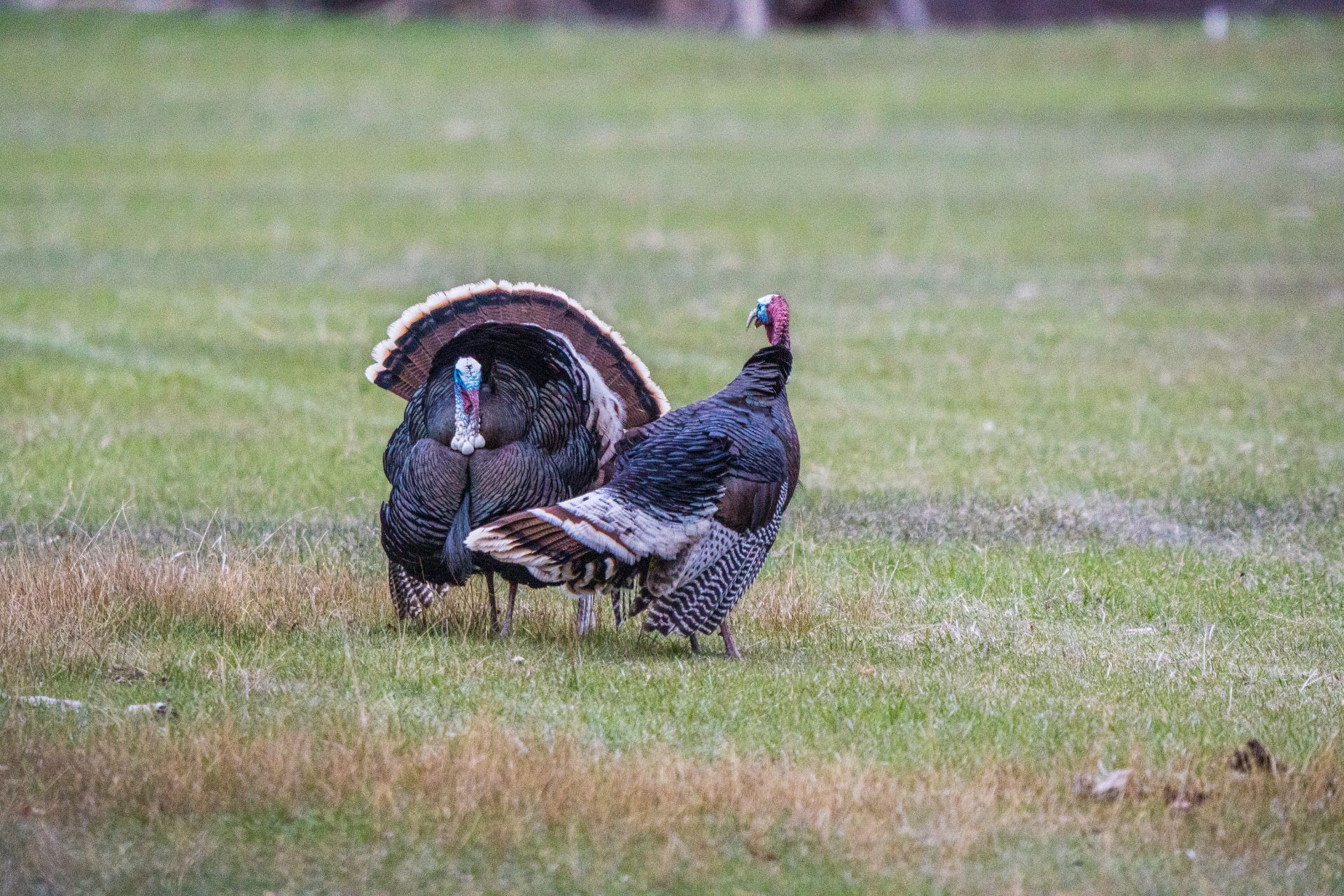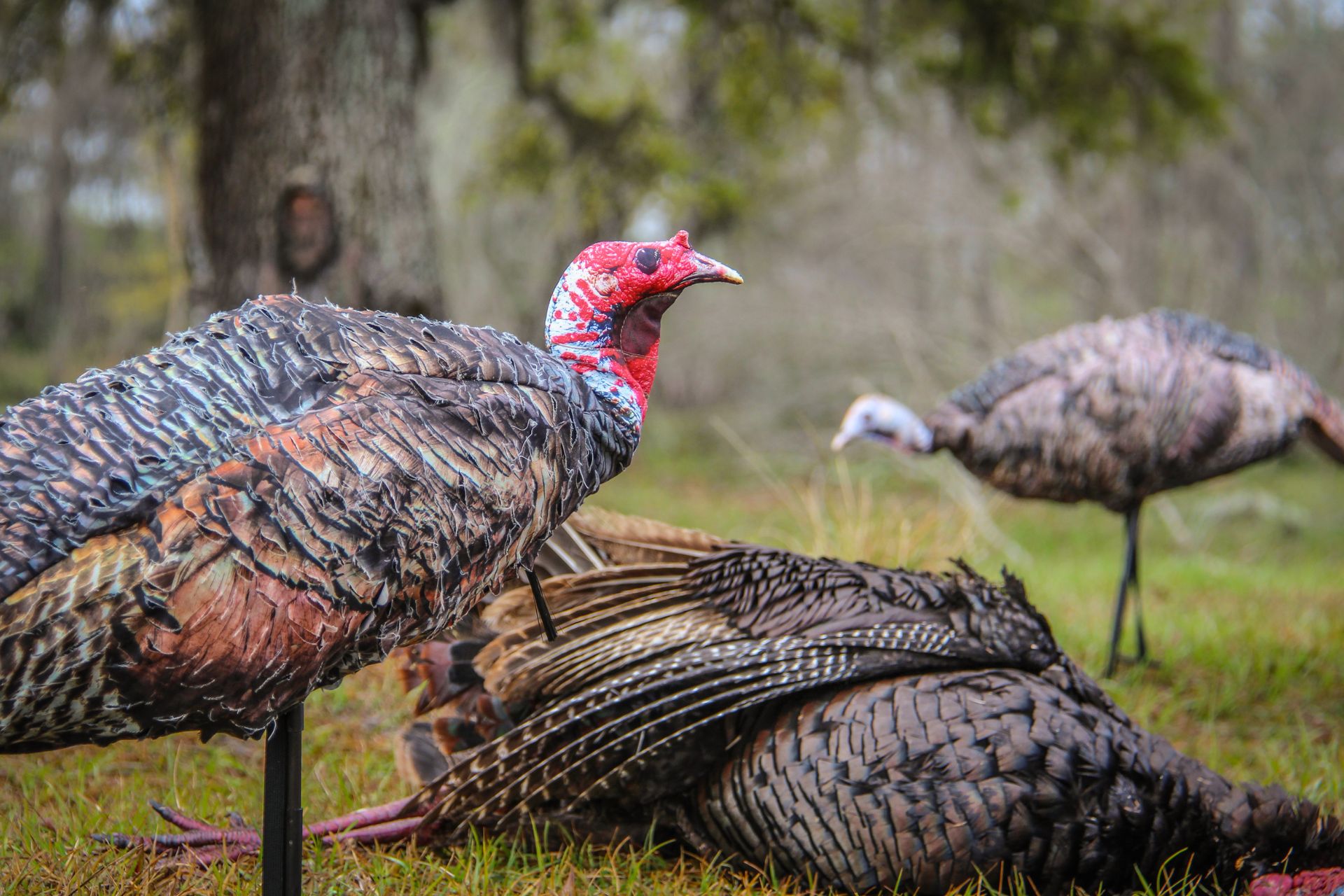Posted by Mary Grace Fisher on Feb 29, 2024
Understanding Turkey Behavior Patterns
When it comes to hunting, understanding turkey behavior patterns is crucial. These patterns can provide insight into the best times to set up a decoy, when to call, and how to position yourself for the best shot. Let’s dive into the nuances of turkey behavior that will help you understand their daily routines — among other things — and ultimately help increase your hunting success.
The Daily Routine of Turkeys
One of the fundamental aspects of understanding turkey behavior patterns is recognizing their daily routine. Turkeys are creatures of habit, adhering to a somewhat predictable schedule that involves roosting in trees at night, flying down to feed and drink in the morning, loafing in the midday, and feeding again in the afternoon before returning to their roost. Becoming familiar with these daily turkey behavior patterns can provide insight into where turkeys will be at any given time, allowing you to plan and strategize accordingly.
Morning Activities
In the early morning, turkeys fly down from their roosts and often head to open areas like fields or pastures. These locations provide them with a clear view of any approaching predators, making them feel safer while they forage for food. If you're setting up a decoy, this is an ideal time. Turkeys are most active and vocal during this period, making it one of the best opportunities to call up a gobbler. Understanding these morning turkey behavior patterns can significantly improve your chances of bagging a prize bird.
Midday Loafing Phase
As the day progresses, turkey behavior patterns shift into what's known as the loafing phase. At this time, turkeys often retreat to cooler, shaded areas like dense woods or swamps. Here, they spend their time preening, dusting, and resting, conserving energy for their afternoon feeding. While this can be a more challenging time to hunt, it can prove successful if your approach is planned strategically. During this phase it's crucial to stay undetected, move slow, and remain quiet since turkeys startle easily.
Afternoon Feeding Time
In the afternoon, turkeys transition back into feeding mode. They'll often return to the same fields or open areas they visited in the morning, providing another excellent opportunity for setting up a decoy or calling. Similar to early morning, this is a solid time to try and capitalize on your efforts.

Afternoon feeding is a solid time to try and capitalize on your efforts.
Breeding Season Behavior
During this period, hunters typically see significant changes in turkey behavior, particularly in gobblers. Gobblers become more vocal and active as they seek out hens for mating. They often emit a variety of sounds ranging from the well-known "gobble" sound, which can be heard up to a mile away under ideal conditions, to softer and more intimate "clucks" and "purrs" when a hen is nearby. This is prime time for hunting, as gobblers are more likely to respond to calls and decoys mimicking hens.
Adapting to Changing Patterns
It's crucial to note that turkey behavior patterns can vary based on several factors like weather, hunting pressure, and availability of food sources. Turkeys may modify their routines in response to these changes. For instance, during periods of heavy hunting pressure, turkeys may become quieter and more wary, altering their usual patterns. Similarly, changes in food availability or weather conditions can trigger shifts in turkey behavior patterns.
Observing and Learning
While understanding basic turkey behavior patterns is vital, successful hunting also hinges on personal observation and learning. It's beneficial to spend time watching and listening to turkeys in your hunting area to learn their unique habits and preferences. Remember, every turkey is unique, and what works for one bird may not work for another. Patience and persistence are key in this process.
Utilizing Decoys
A high-quality decoy can significantly enhance your hunting experience. When used correctly, they can attract turkeys to your location and provide you with an opportunity for a clean, ethical shot. However, the effectiveness of a decoy is greatly enhanced when combined with an understanding of turkey behavior patterns. If you’re in need of a versatile, lightweight, and realistic turkey decoy this season, check out our selection that ranges from hen and tom combos to full-strut, 3D gobblers.
Our selection of decoys includes hen and tom combos.
Understanding turkey behavior patterns is a continuous learning process that evolves with each hunting experience. The more time you spend observing turkeys and understanding their behavior, the better prepared you'll be for your next hunt. Whether you're a seasoned hunter or just starting out, this knowledge is key to improving your success rate. Remember, hunting is as much a game of patience and observation as it is of skill and precision.

